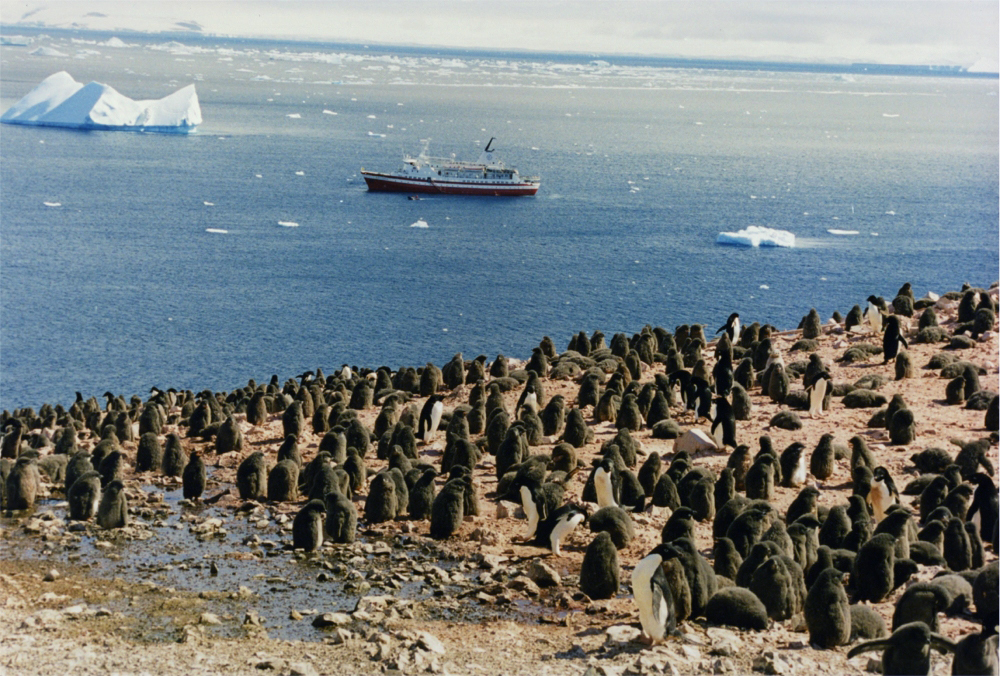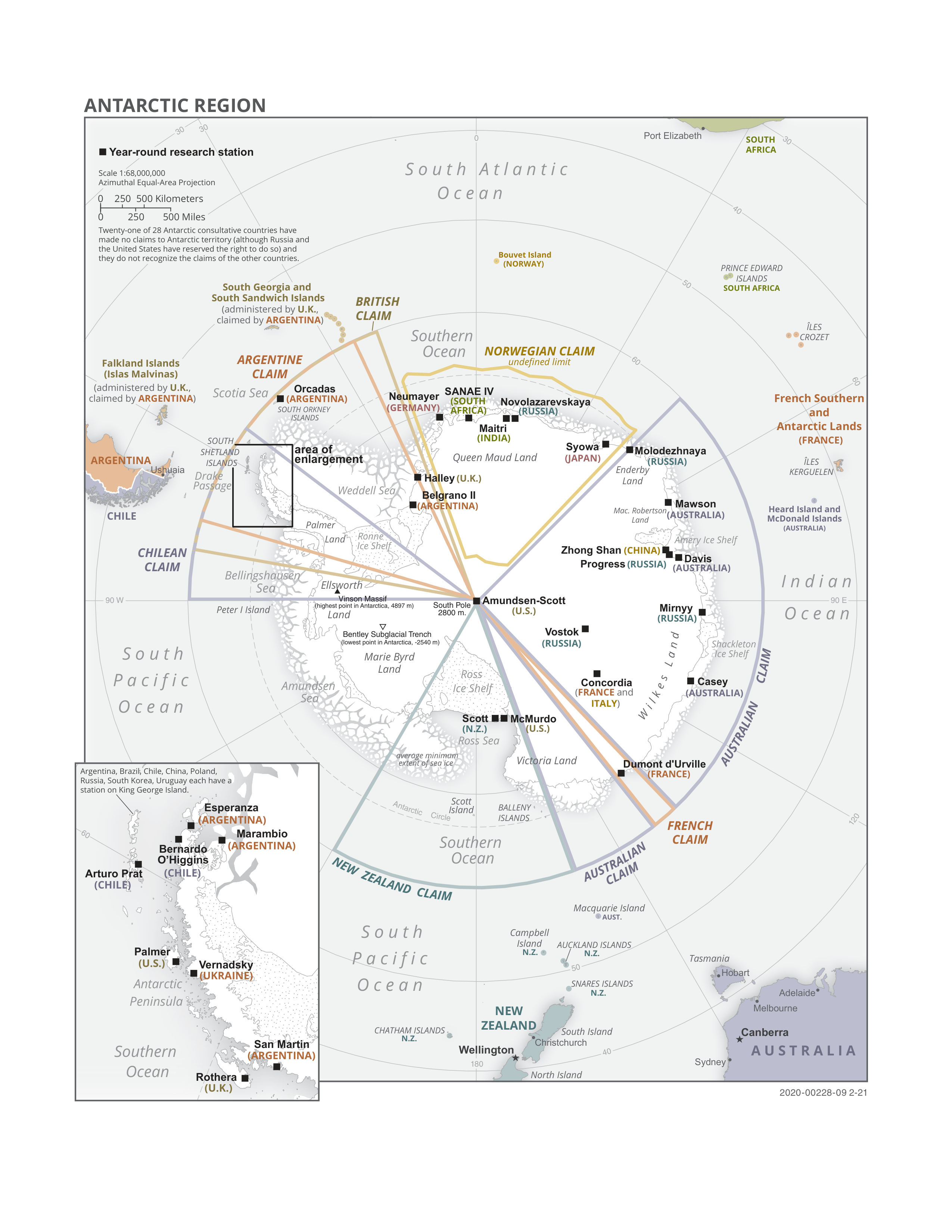|
Bluff Island (Antarctica)
Bluff Island is an island lying south of Magnetic Island and west of the Breidnes Peninsula, Vestfold Hills, in Prydz Bay, Antarctica. It was mapped from aerial photos taken by the Lars Christensen Expedition, 1936–37, re-emapped by the Australian National Antarctic Research Expeditions (1957–58) and so named because the south end of the island is marked by a steep cliff face. Important Bird Area The island forms part of the Magnetic Island and nearby islands Important Bird Area (IBA), comprising Magnetic, Turner, Waterhouse, Lugg, Boyd Boyd may refer to: Places Canada * Boyd Conservation Area, a conservation area located northwest of Toronto, Ontario * Boyd Lake (other) United States * Boyd County (other) * Boyd, Indiana * Boyd, Iowa * Boyd, Kansas * B ... and Bluff Islands, along with the intervening islands and marine area. The site was designated an IBA by BirdLife International because it supports large colonies of Adélie p ... [...More Info...] [...Related Items...] OR: [Wikipedia] [Google] [Baidu] |
Antarctica
Antarctica () is Earth's southernmost and least-populated continent. Situated almost entirely south of the Antarctic Circle and surrounded by the Southern Ocean, it contains the geographic South Pole. Antarctica is the fifth-largest continent, being about 40% larger than Europe, and has an area of . Most of Antarctica is covered by the Antarctic ice sheet, with an average thickness of . Antarctica is, on average, the coldest, driest, and windiest of the continents, and it has the highest average elevation. It is mainly a polar desert, with annual precipitation of over along the coast and far less inland. About 70% of the world's freshwater reserves are frozen in Antarctica, which, if melted, would raise global sea levels by almost . Antarctica holds the record for the lowest measured temperature on Earth, . The coastal regions can reach temperatures over in summer. Native species of animals include mites, nematodes, penguins, seals and tardigrades. Where vegetation o ... [...More Info...] [...Related Items...] OR: [Wikipedia] [Google] [Baidu] |
Waterhouse Island (Antarctica)
Waterhouse Island is an island in Prydz Bay on the Ingrid Christensen Coast of Princess Elizabeth Land, Antarctica. It lies just SSW of Lugg Island, and about 3.5 km NNW of Australia's Davis Station on Broad Peninsula in the Vestfold Hills. It was named after R.S. Waterhouse, a Medical Officer at Davis in 1971. Important Bird Area The island forms part of the Magnetic Island and nearby islands Important Bird Area (IBA), comprising Magnetic, Turner, Waterhouse, Lugg, Boyd and Bluff Islands, along with intervening islands and marine area. The site was designated an IBA by BirdLife International because it supports large colonies of Adélie penguin The Adélie penguin (''Pygoscelis adeliae'') is a species of penguin common along the entire coast of the Antarctic continent, which is the only place where it is found. It is the most widespread penguin species, and, along with the emperor p ...s totalling some 29,000 breeding pairs, based on 2012 satellite imagery. Re ... [...More Info...] [...Related Items...] OR: [Wikipedia] [Google] [Baidu] |
Important Bird Areas Of Antarctica
Importance is a property of entities that matter or make a difference. For example, World War II was an important event and Albert Einstein was an important person because of how they affected the world. There are disagreements in the academic literature about what type of difference is required. According to the causal impact view, something is important if it has a big causal impact on the world. This view is rejected by various theorists, who insist that an additional aspect is required: that the impact in question makes a value difference. This is often understood in terms of how the important thing affects the well-being of people. So on this view, World War II was important, not just because it brought about many wide-ranging changes but because these changes had severe negative impacts on the well-being of the people involved. The difference in question is usually understood counterfactually as the contrast between how the world actually is and how the world would have bee ... [...More Info...] [...Related Items...] OR: [Wikipedia] [Google] [Baidu] |
Adélie Penguin
The Adélie penguin (''Pygoscelis adeliae'') is a species of penguin common along the entire coast of the Antarctic continent, which is the only place where it is found. It is the most widespread penguin species, and, along with the emperor penguin, is the most southerly distributed of all penguins. It is named after Adélie Land, in turn named for Adèle Dumont d'Urville, who was married to French explorer Jules Dumont d'Urville, who first discovered this penguin in 1840. Adélie penguins obtain their food by both predation and foraging, with a diet of mainly krill and fish. Taxonomy and systematics The first Adélie penguin specimens were collected by crew members of French explorer Jules Dumont d'Urville on his expedition to Antarctica in the late 1830s and early 1840s. Jacques Bernard Hombron and Honoré Jacquinot, two French surgeons who doubled as naturalists on the journey, described the bird for science in 1841, giving it the scientific name ''Catarrhactes adeli� ... [...More Info...] [...Related Items...] OR: [Wikipedia] [Google] [Baidu] |
BirdLife International
BirdLife International is a global partnership of non-governmental organizations that strives to conserve birds and their habitats. BirdLife International's priorities include preventing extinction of bird species, identifying and safeguarding important sites for birds, maintaining and restoring key bird habitats, and empowering conservationists worldwide. It has a membership of more than 2.5 million people across 116 country partner organizations, including the Royal Society for the Protection of Birds, the Wild Bird Society of Japan, the National Audubon Society and American Bird Conservancy. BirdLife International has identified 13,000 Important Bird and Biodiversity Areas and is the official International Union for Conservation of Nature’s Red List authority for birds. As of 2015, BirdLife International has established that 1,375 bird species (13% of the total) are threatened with extinction ( critically endangered, endangered or vulnerable). BirdLife International p ... [...More Info...] [...Related Items...] OR: [Wikipedia] [Google] [Baidu] |
Boyd Island
Boyd Island is an island in Prydz Bay on the Ingrid Christensen Coast of Princess Elizabeth Land, Antarctica. It lies just SSW of Lugg Island, and about 3.5 km NNW of Australia's Davis Station on Broad Peninsula in the Vestfold Hills. It was named after Jeff J. Boyd, a Medical Officer at Davis in 1970. Important Bird Area The island forms part of the Magnetic Island and nearby islands Important Bird Area (IBA), comprising Magnetic, Turner, Waterhouse, Lugg, Boyd and Bluff Islands, along with other intervening islands and the marine area. The site was designated an IBA by BirdLife International because it supports large colonies of Adélie penguin The Adélie penguin (''Pygoscelis adeliae'') is a species of penguin common along the entire coast of the Antarctic continent, which is the only place where it is found. It is the most widespread penguin species, and, along with the emperor p ...s totalling some 29,000 breeding pairs, based on 2012 satellite imagery. ... [...More Info...] [...Related Items...] OR: [Wikipedia] [Google] [Baidu] |
Lugg Island
Lugg Island is a small island in the Donskiye Islands group lying north-west of Lake Island, off the west end of Breidnes Peninsula, Vestfold Hills, Antarctica. It was first plotted from aerial photos taken by the Lars Christensen Expedition, 1936–37, and was named by the Antarctic Names Committee of Australia for Dr. D. Lugg, medical officer at Davis Station in 1963, who visited the island for biological studies. Important Bird Area The island forms part of the Magnetic Island and nearby islands Important Bird Area (IBA), comprising Magnetic, Turner, Waterhouse, Lugg, Boyd and Bluff Islands, along with intervening islands and marine area. The site was designated an IBA by BirdLife International because it supports large colonies of Adélie penguin The Adélie penguin (''Pygoscelis adeliae'') is a species of penguin common along the entire coast of the Antarctic continent, which is the only place where it is found. It is the most widespread penguin species, and, along ... [...More Info...] [...Related Items...] OR: [Wikipedia] [Google] [Baidu] |
Turner Island (Antarctica)
Turner Island is an island in the Donskiye Islands group lying north-west of Bluff Island and west of Breidnes Peninsula, Vestfold Hills, in Prydz Bay, Princess Elizabeth Land, Antarctica. Discovery and naming The island was mapped by Norwegian cartographers from aerial photos taken by the Lars Christensen Expedition, 1936–37. It was remapped by ANARE ( Australian National Antarctic Research Expeditions) (1957–58) and named for P.B. Turner, a radio officer at Davis Station in 1958. Important Bird Area The island forms part of the Magnetic Island and nearby islands Important Bird Area (IBA), comprising Magnetic, Turner, Waterhouse, Lugg, Boyd Boyd may refer to: Places Canada * Boyd Conservation Area, a conservation area located northwest of Toronto, Ontario * Boyd Lake (other) United States * Boyd County (other) * Boyd, Indiana * Boyd, Iowa * Boyd, Kansas * B ... and Bluff Islands, along with intervening islands and marine area. The site ... [...More Info...] [...Related Items...] OR: [Wikipedia] [Google] [Baidu] |
Antarctic Treaty System
russian: link=no, Договор об Антарктике es, link=no, Tratado Antártico , name = Antarctic Treaty System , image = Flag of the Antarctic Treaty.svgborder , image_width = 180px , caption = Flag of the Antarctic Treaty System , type = Condominium , date_drafted = , date_signed = December 1, 1959"Antarctic Treaty" in ''The New Encyclopædia Britannica''. Chicago: Encyclopædia Britannica Inc., 15th edn., 1992, Vol. 1, p. 439. , location_signed = Washington, D.C., United States , date_sealed = , date_effective = June 23, 1961 , condition_effective = Ratification of all 12 signatories , date_expiration = , signatories = 12 , parties = 55 , depositor = Federal government of the United States , languages = English, French, Russian, and Spanish , wikisource = Antarctic Treaty The Antarctic Treaty an ... [...More Info...] [...Related Items...] OR: [Wikipedia] [Google] [Baidu] |
Important Bird Area
An Important Bird and Biodiversity Area (IBA) is an area identified using an internationally agreed set of criteria as being globally important for the conservation of bird populations. IBA was developed and sites are identified by BirdLife International. There are over 13,000 IBAs worldwide. These sites are small enough to be entirely conserved and differ in their character, habitat or ornithological importance from the surrounding habitat. In the United States the Program is administered by the National Audubon Society. Often IBAs form part of a country's existing protected area network, and so are protected under national legislation. Legal recognition and protection of IBAs that are not within existing protected areas varies within different countries. Some countries have a National IBA Conservation Strategy, whereas in others protection is completely lacking. History In 1985, following a specific request from the European Economic Community, Birdlife International ... [...More Info...] [...Related Items...] OR: [Wikipedia] [Google] [Baidu] |
Australian National Antarctic Research Expeditions
The Australian National Antarctic Research Expeditions (ANARE ) is the historical name for the Australian Antarctic Program (AAp) administered for Australia by the Australian Antarctic Division (AAD). History Australia has had a long involvement in south polar regions since as early as Douglas Mawson's Australasian Antarctic Expedition in 1911. Further Australian exploration of the Antarctic continent was conducted during the British Australian and New Zealand Antarctic Research Expedition (BANZARE), which was conducted over the years 1929–1931. The Australian National Antarctic Research Expeditions were established in 1947 with expeditions to Macquarie Island and Heard Island. In 1948 the Australian Antarctic Division (AAD) was established to administer the expedition program. ANARE Name The name ANARE fell out of official use in the early 2000s. However current and former Australian Antarctic expeditioners continue to use the term informally as a means of identifica ... [...More Info...] [...Related Items...] OR: [Wikipedia] [Google] [Baidu] |





.jpg)